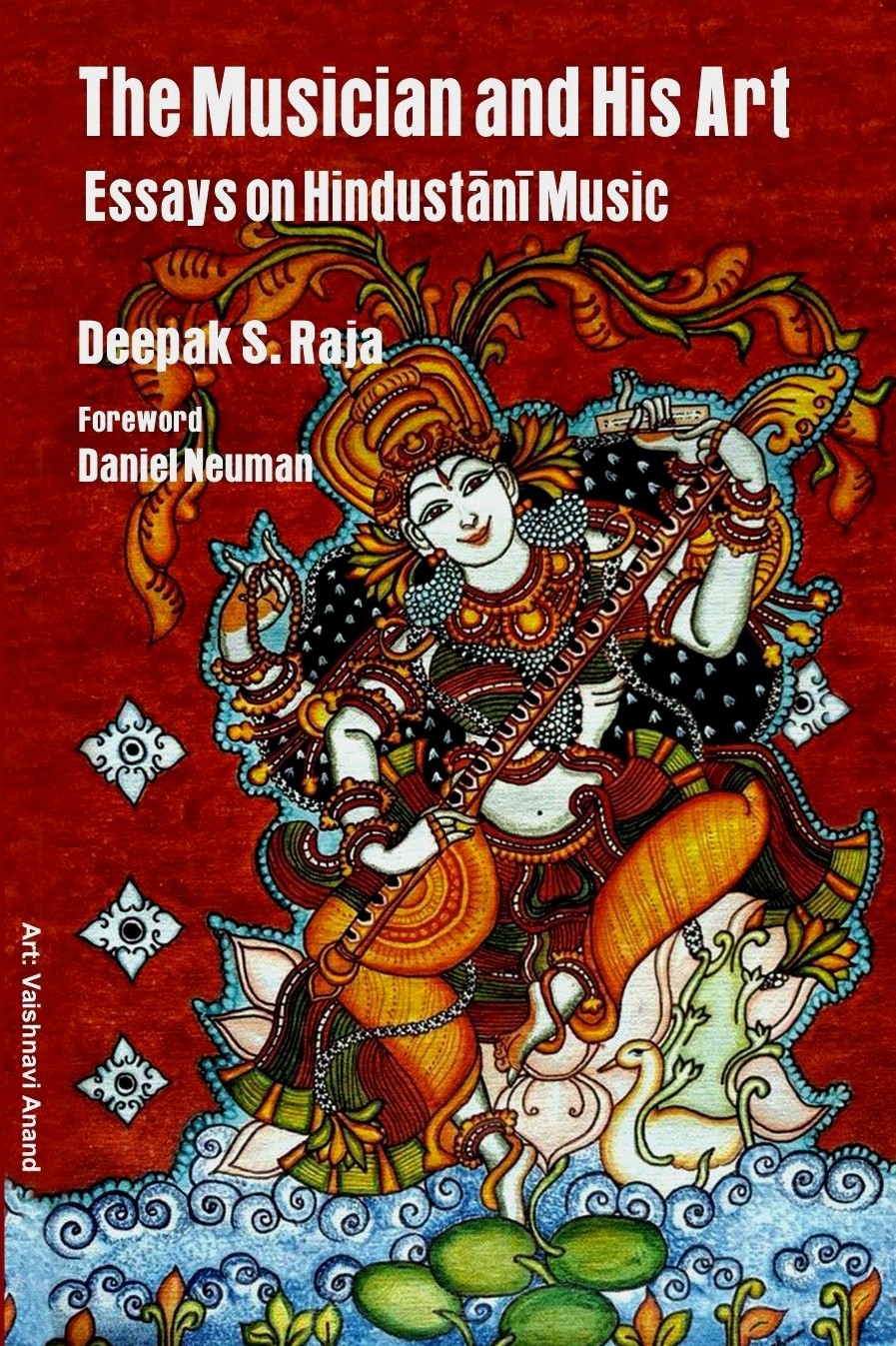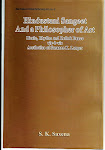Title: The Raga-ness of Ragas
Author: Deepak S. Raja
Hardcover 366+ pages,
ISBN 978-81-246-0835-7
Published in India, 2016 by D.K Printworld
Available on Amazon.com Price: $62.50
 Growing up in India and learning about “ragas” from master musicians, I learned how to sing several ragas with ease. I never felt the need to explain the concept of a raga (a key melodic concept in Indian classical music) to anyone. Every listener was already familiar with it. After moving to the United States, I found my listeners asking for an explanation for the term “raga” even before listening to it. “What is a raga?” they asked.
Growing up in India and learning about “ragas” from master musicians, I learned how to sing several ragas with ease. I never felt the need to explain the concept of a raga (a key melodic concept in Indian classical music) to anyone. Every listener was already familiar with it. After moving to the United States, I found my listeners asking for an explanation for the term “raga” even before listening to it. “What is a raga?” they asked.
 For decades (if not centuries), the exercise of defining the term “raga” has challenged academicians, teachers and practicing musicians alike. The noted Indian musicologist and author Deepak Raja started out on a journey several years ago with the mission to explore the subject of what constitutes the essence of ragas (what the author terms as “raga-ness”) and to articulate it to the best possible extent through the medium of language. His reflections on this topic have taken the form of a book titled “The Raga-ness of Ragas” published in early 2016.
For decades (if not centuries), the exercise of defining the term “raga” has challenged academicians, teachers and practicing musicians alike. The noted Indian musicologist and author Deepak Raja started out on a journey several years ago with the mission to explore the subject of what constitutes the essence of ragas (what the author terms as “raga-ness”) and to articulate it to the best possible extent through the medium of language. His reflections on this topic have taken the form of a book titled “The Raga-ness of Ragas” published in early 2016.
In this beautifully bound hardcover book, the author Deepak Raja examines the concept of a raga and its raga-ness from the points of view of their melodic and aesthetic grammar. The author’s personal observations on Hindustani music, quoted excerpts from ancient classic treatises as well as contemporary books on Indian music and the scholarly perspectives of practicing musicians make the book an interesting read. By relating funny stories and anecdotes, the author manages to infuse liveliness in what could otherwise be a dry and theoretical study.
The book is divided into two parts. The first part contains eleven comprehensive essays on the foundational concept of the raga, and how the essence of a raga can be established through the proper and effective use of elements such as bandish (composition), alaap (slow, meditative movement that unfolds the raga), taans (faster melodic movements performed during the rendition of the raga) as well as special techniques used by vocalists and instrumentalists. In his capacity as a repertoire analyst for India Archive Music Ltd based in New York, the author analyzed over one hundred ragas performed by 50 prominent musicians. A survey of 49 of these 100 ragas are presented in the second part of the book.
A brilliant foreword by the eminent Hindustani vocalist and composer, Dr. Ashwini Bhide Deshpande, a succinct introductory chapter by Lyle Wachovsky of New York based India Archive Music Ltd, an illuminating guest essay on the concept of “Rasa and Western System of Keys” by Alessandro Dozio, a detailed glossary of terms and explanatory notes as well as a comprehensive bibliography are great additions to the book.
The opening chapter of the first part of the book introduces the concept of a raga as a specialist vehicle in communicating emotional ideas. In the remaining ten chapters of Part I of the book, the fact that the raga takes on a new shape each time it is performed, the examination of the socio-economic context in which music practice evolved up until the 19th century, the consideration of ragas in terms of chemical metaphors such as allotropes, compounds and emulsions, a discussion about suitable performance times for ragas unique to the Hindustani system of music, the evaluation of the theory of Rasa in Hindustani music and the exploration of the concept of raga-ness manifested in the melodic elements of bandish, alaap and taans are discussed at length.
The second part of the book is an analysis of 49 ragas in terms of attributes such as melodic ascents, descents, parent family, musical notes of importance and the critical skeletal phraseology that establishes the center of melodic gravity for each of the ragas. The author looks at the evolution of these ragas from a historical perspective and quotes the opinions of several well known scholars such as Bhatkhande, Manikbuwa Thakurdas, Peter Manuel, vocalists such as Faiyyaz Ahmed Khan and instrumentalists such as sitarist Ustad Vilayat Khan.
“I feel that raga-tattva or raga-ness of ragas is the most important facet of our musical culture requiring comprehension and preservation” said Deepak Raja to this book reviewer. Deepak Raja has authored two other books on Hindustani music titled “Khayal Vocalism” and “Hindustani Music Today”. His blog on ragas http://www.swaratala.blogspot.com commands a dedicated following from Hindustani classical music lovers.
Deepak Raja’s fine analytical and writing skills as well as the application of his knowledge from a wide variety of disciplines such as art, history, culture, linguistics, mathematics, physics, chemistry, economics and psychology to the study of Hindustani music are praise-worthy. His reputation for serious research in Hindustani music, critical thinking skills, sound analytical approach and brilliant articulation shine through this book. “The Raga-ness of Ragas” is one of the most enjoyable books on raga music that I have read in the recent times.
Reviewer: Shuchita Rao in Lokvani E-Paper









